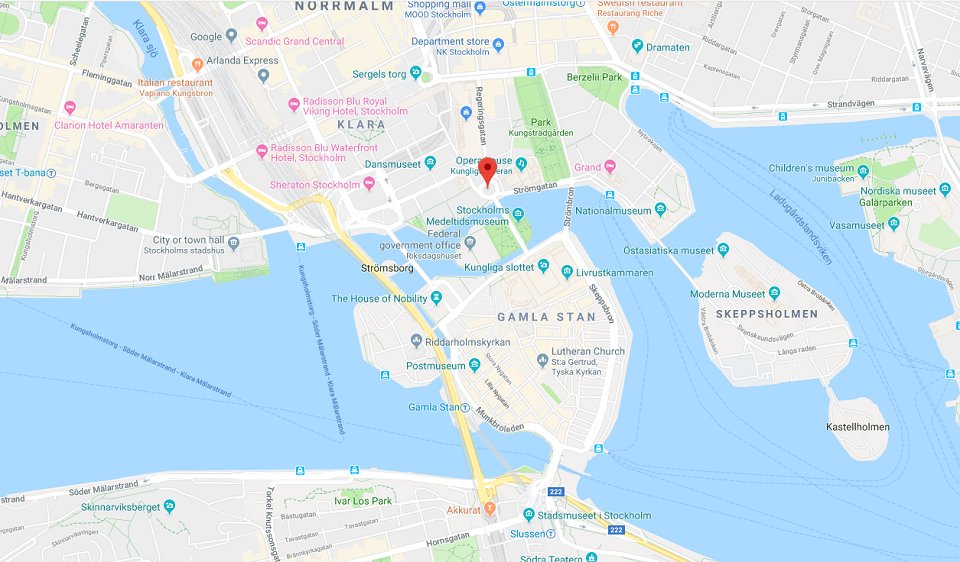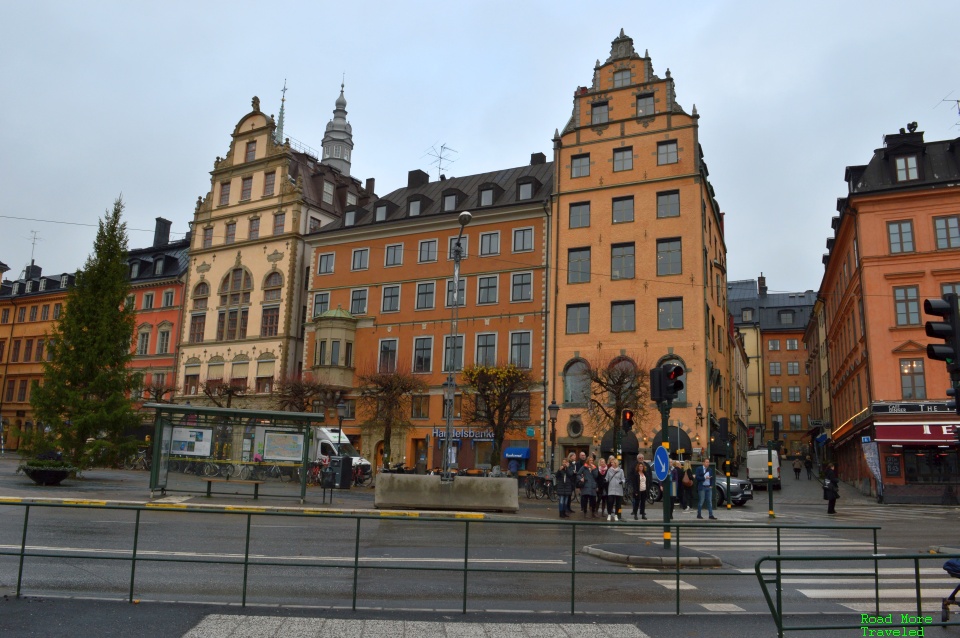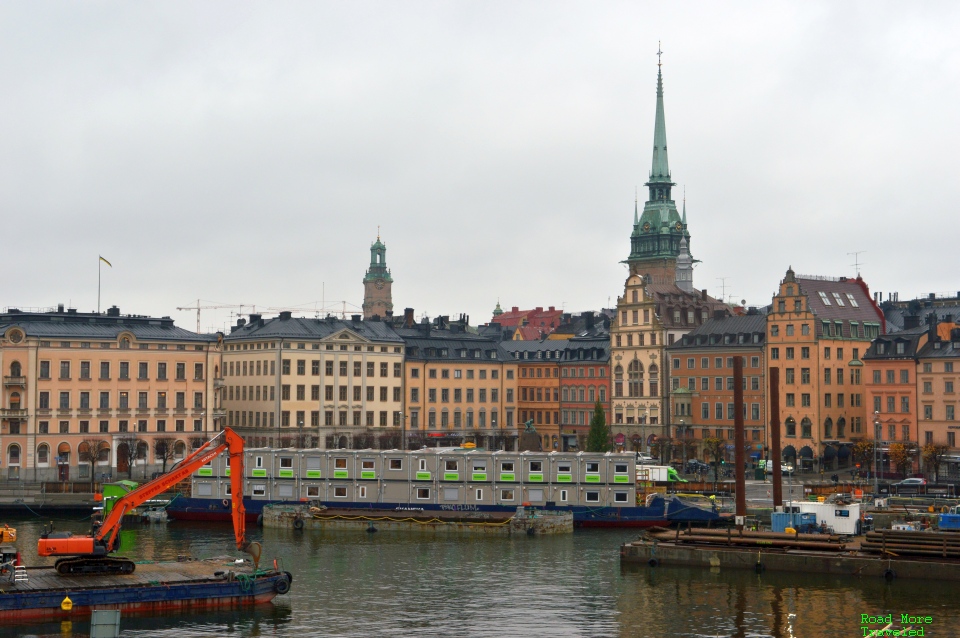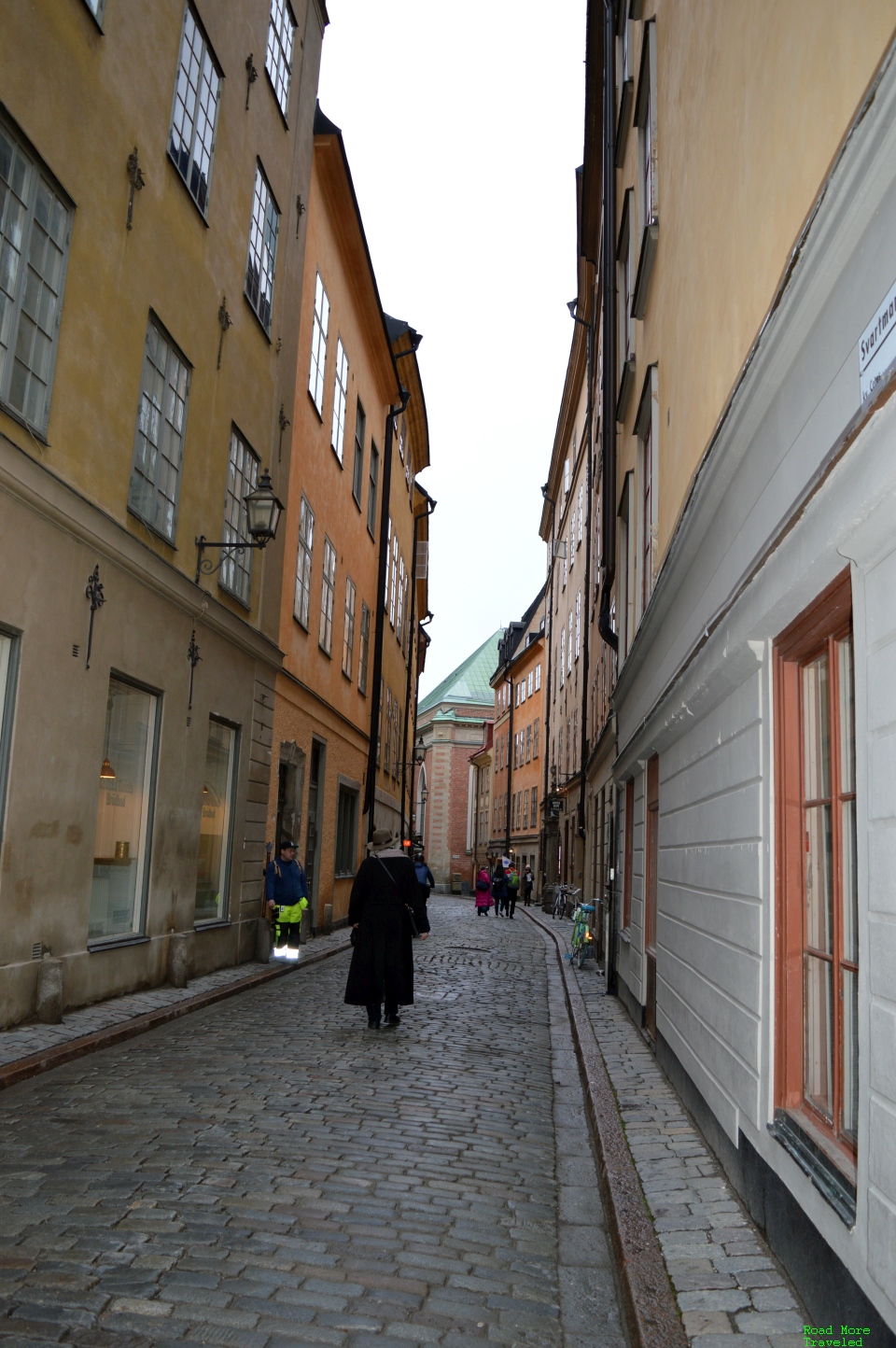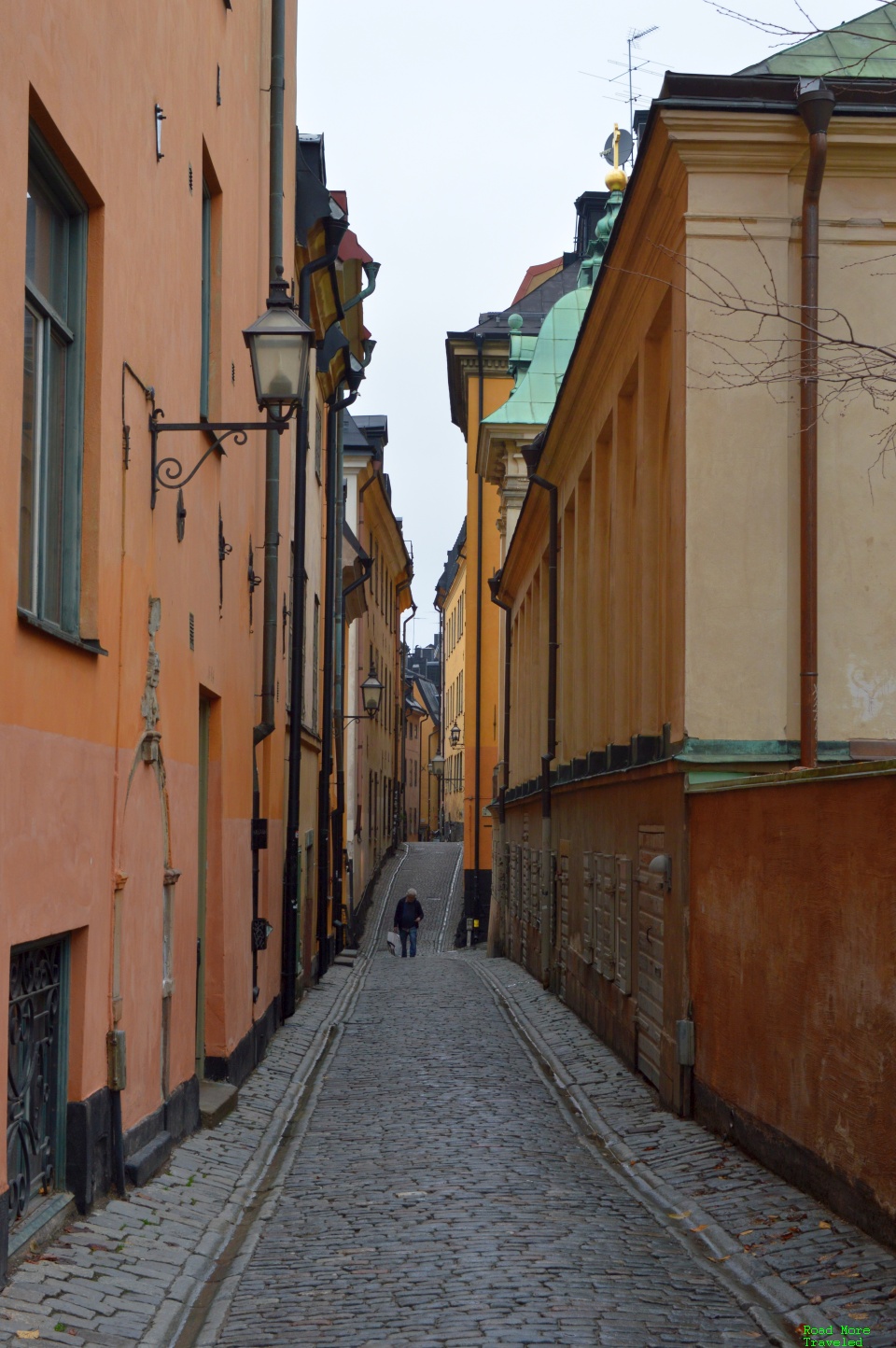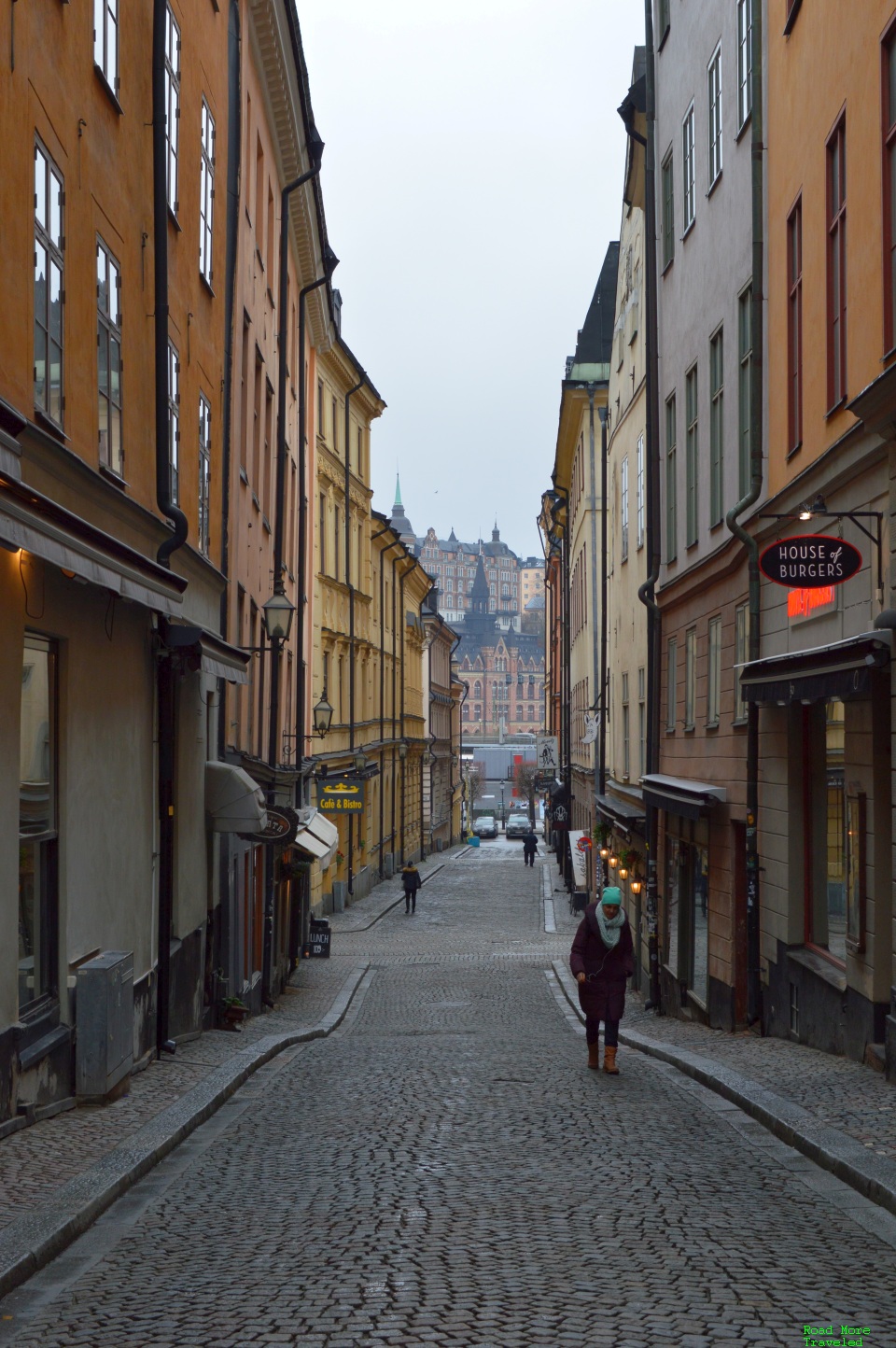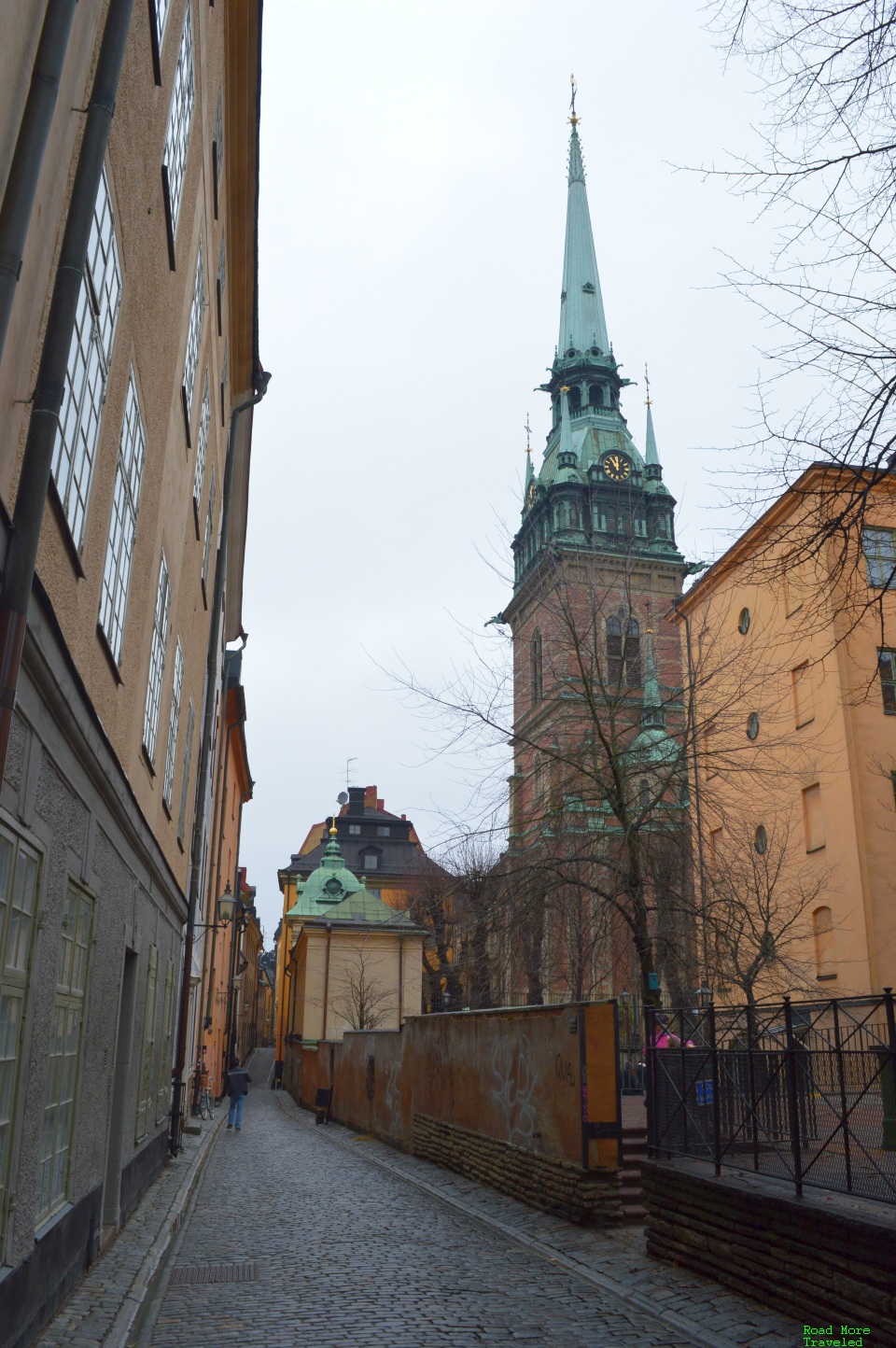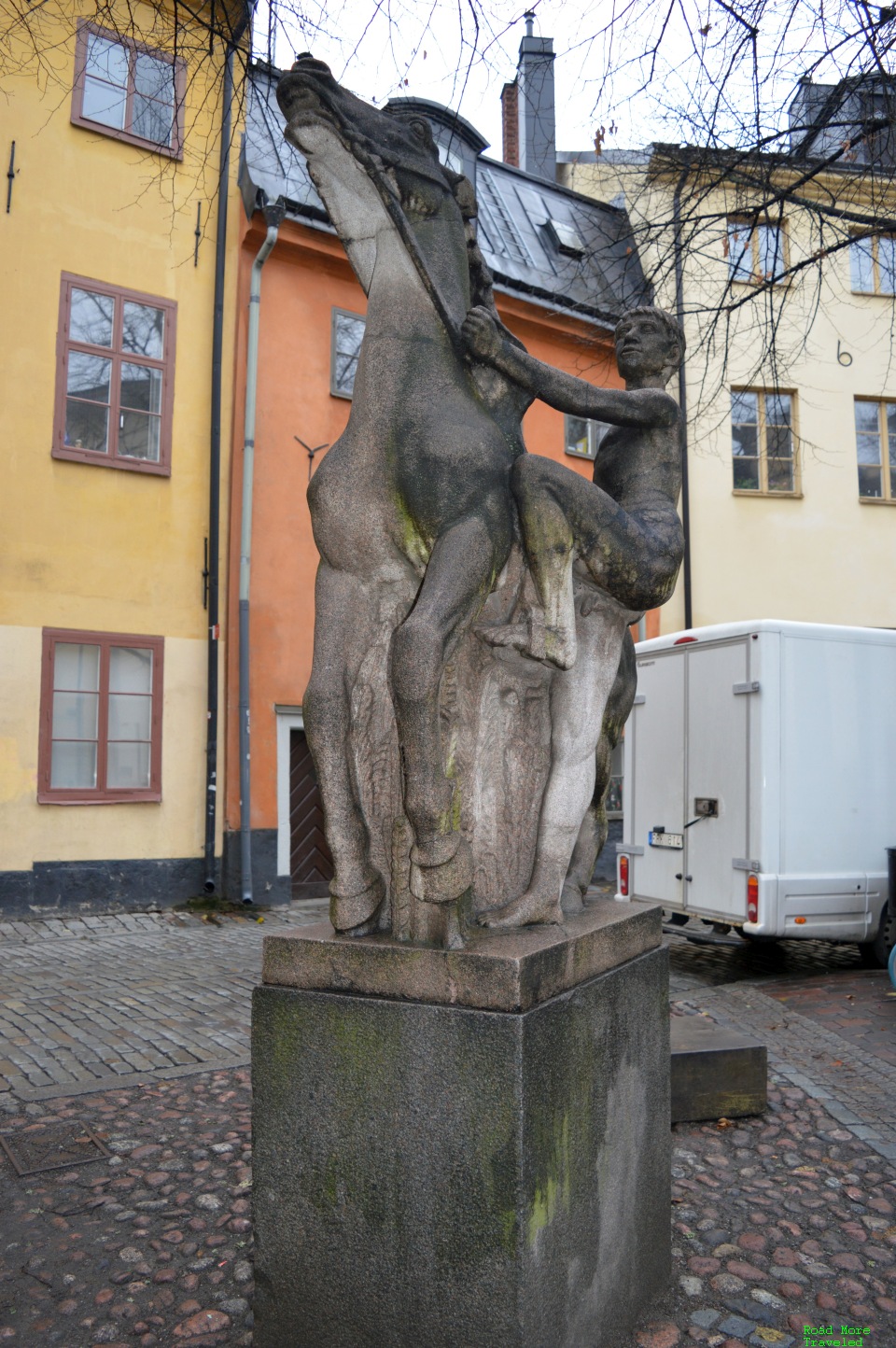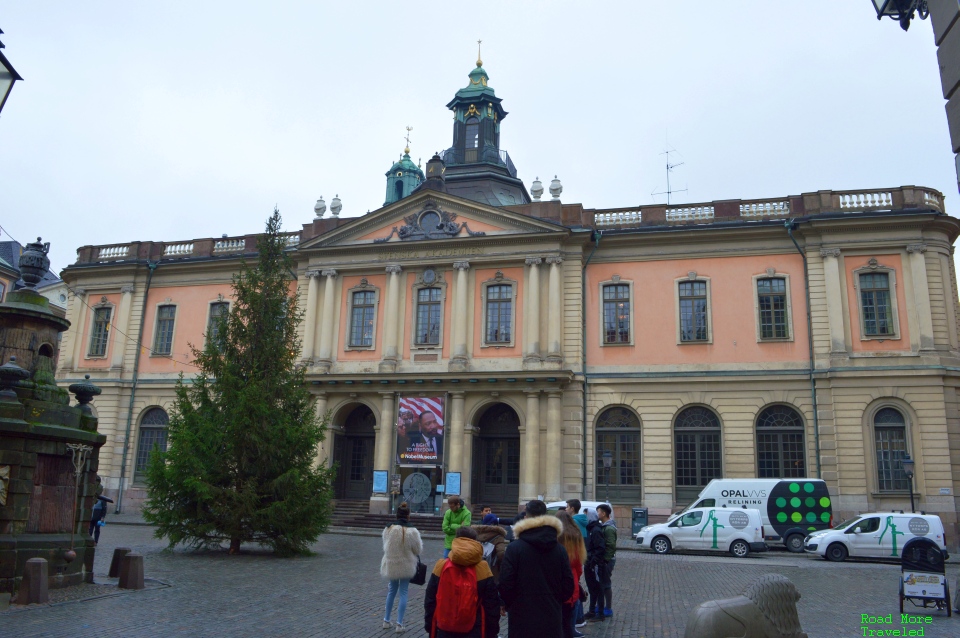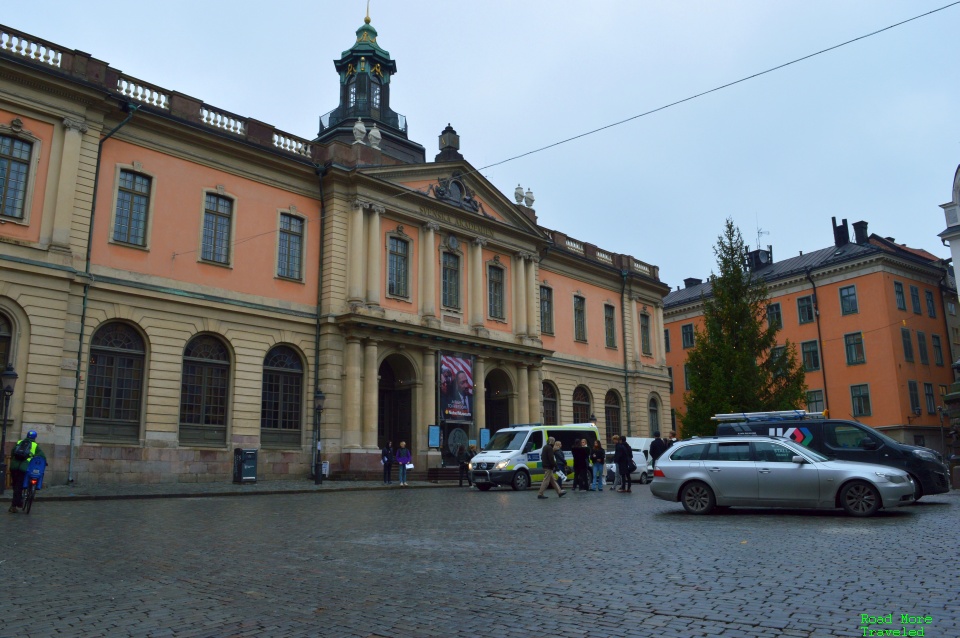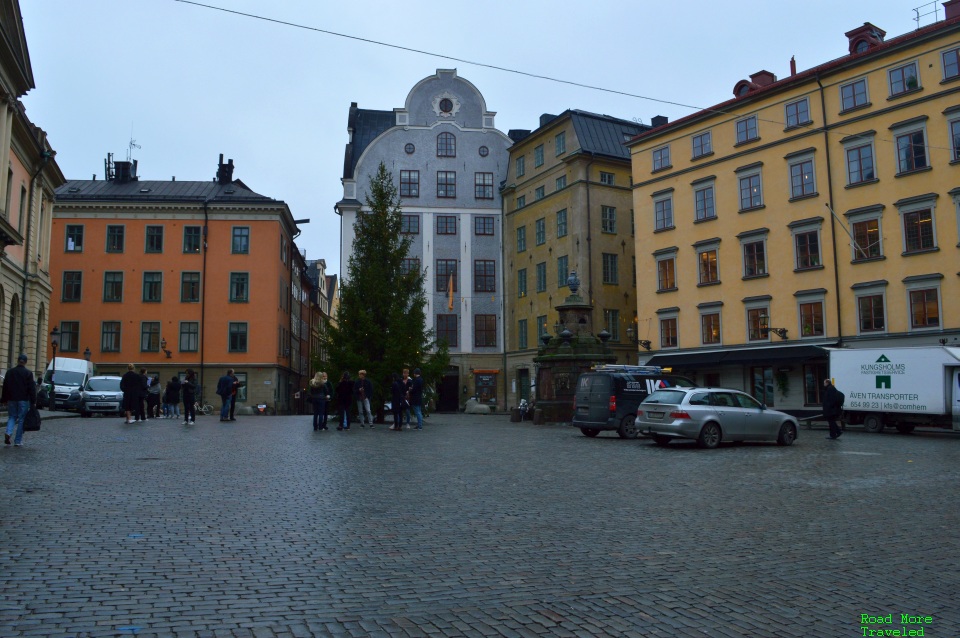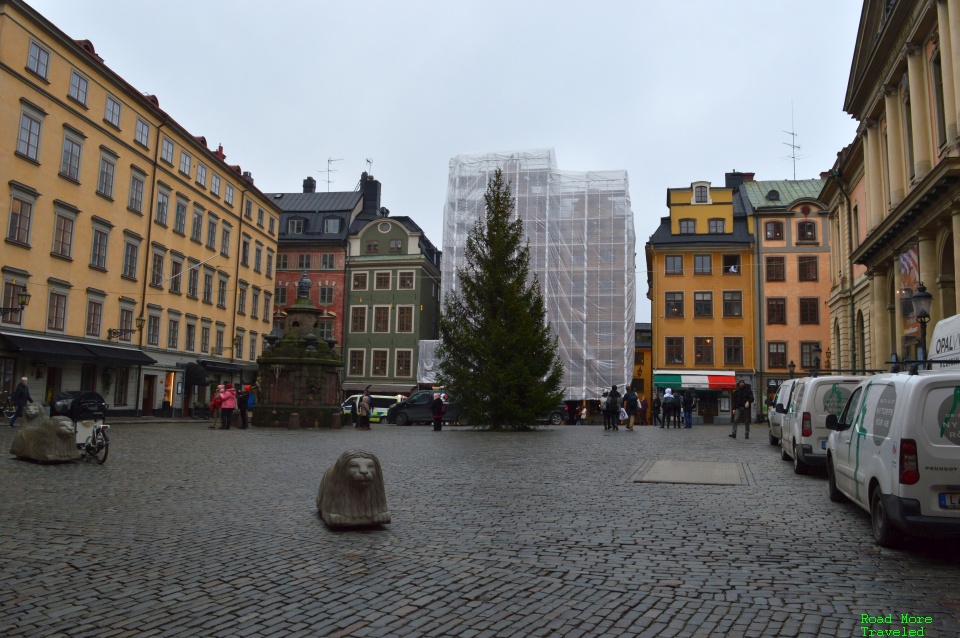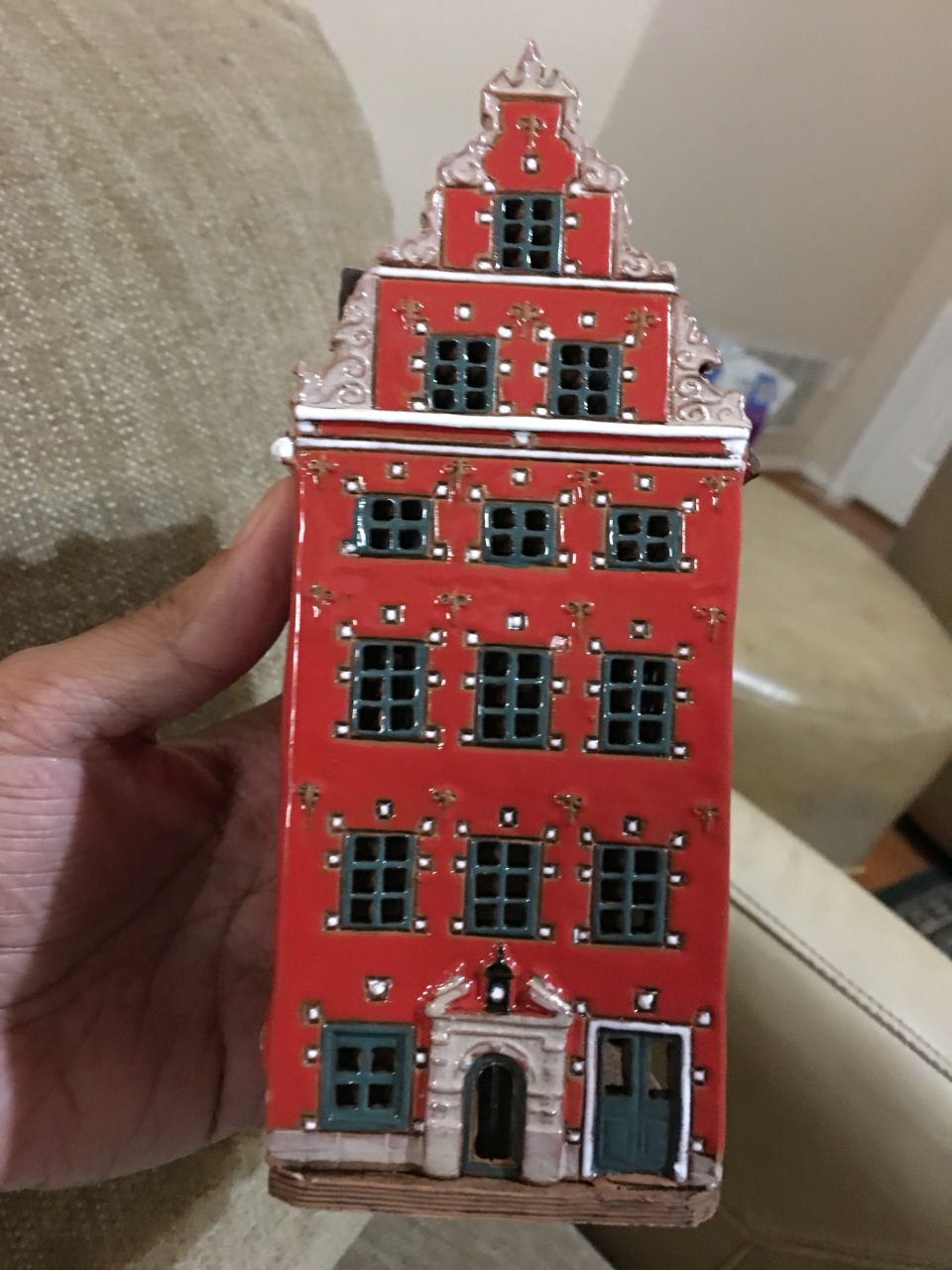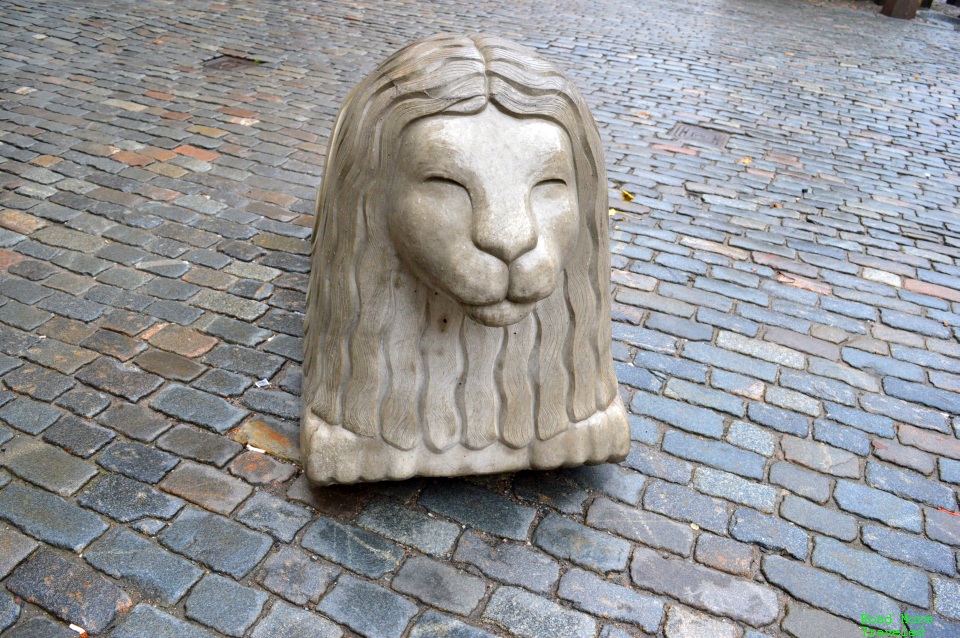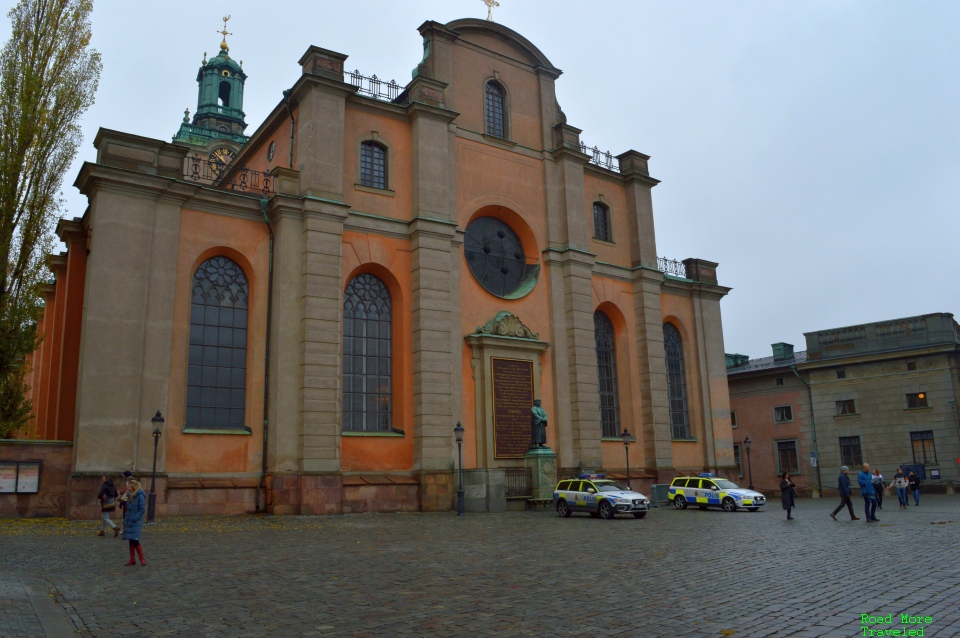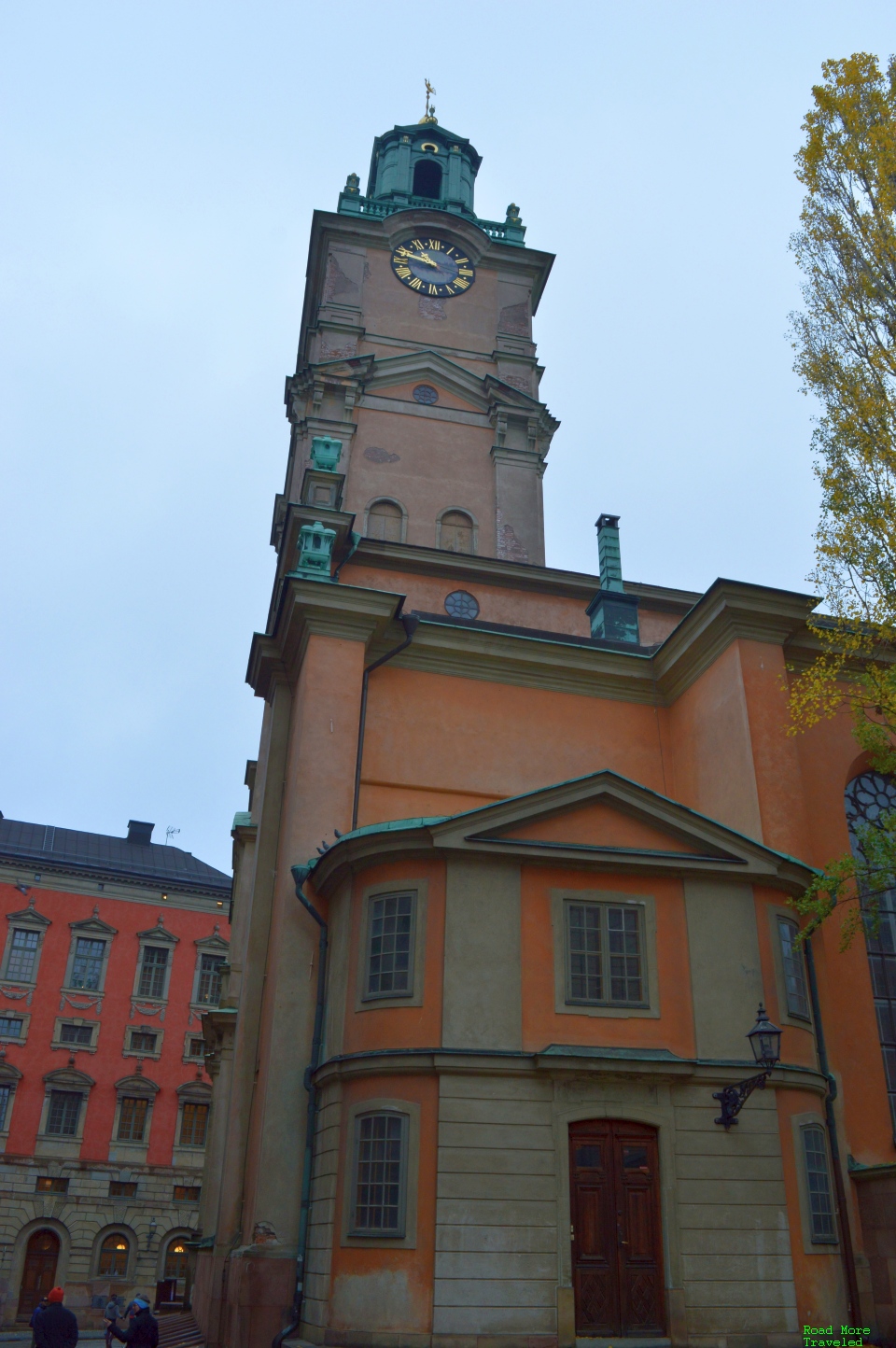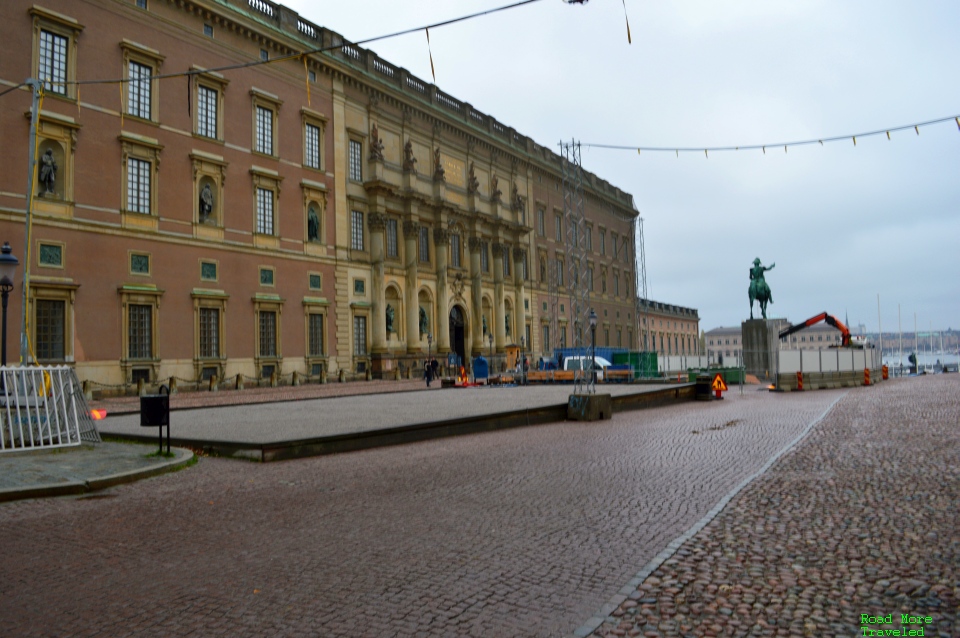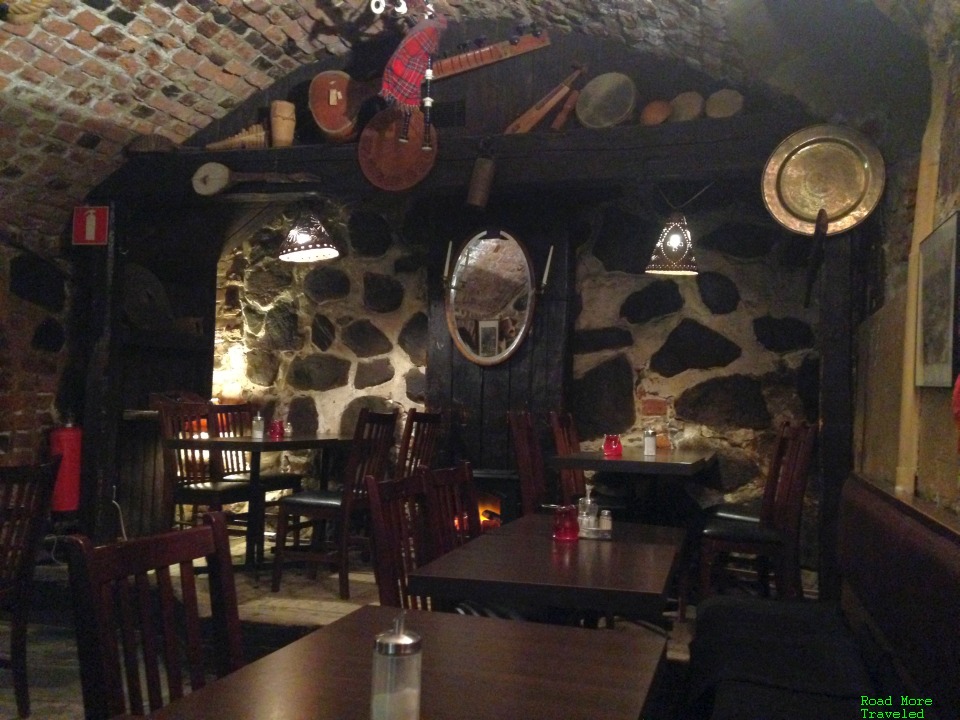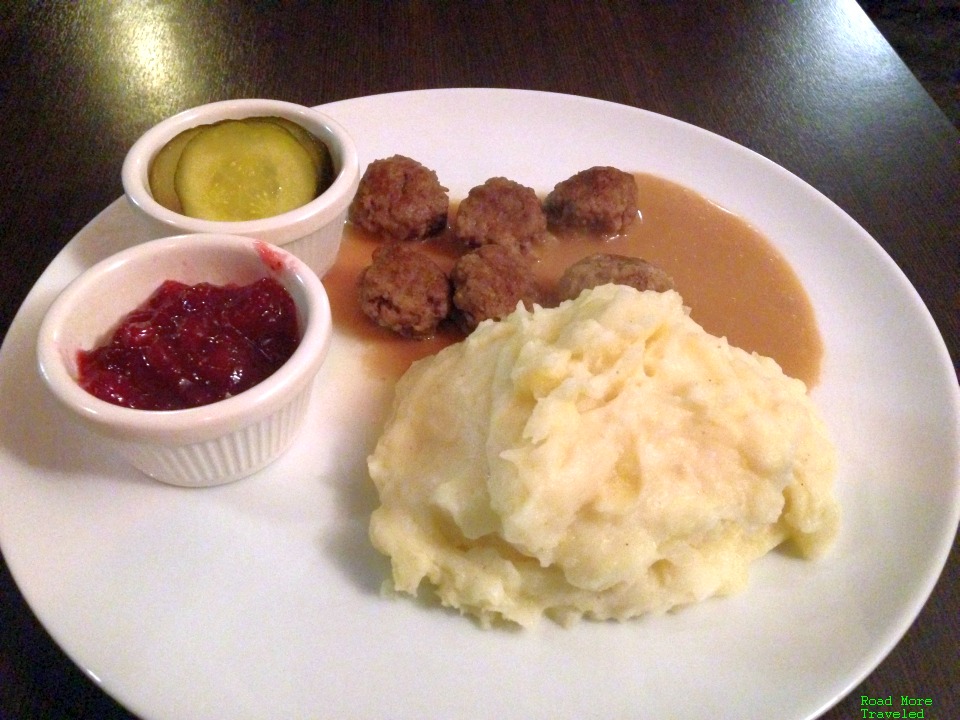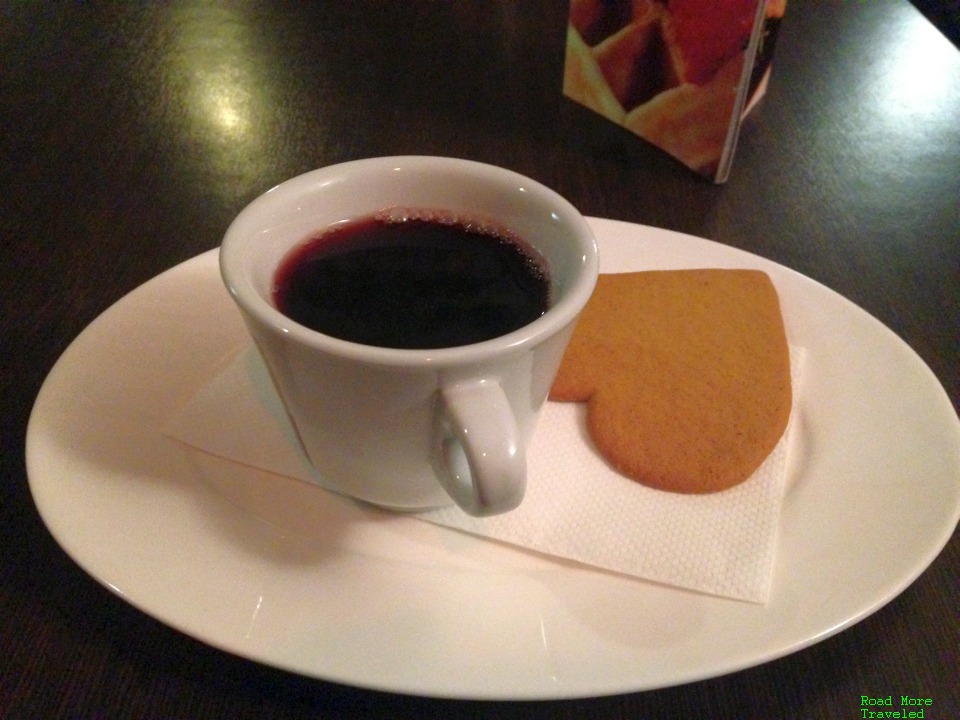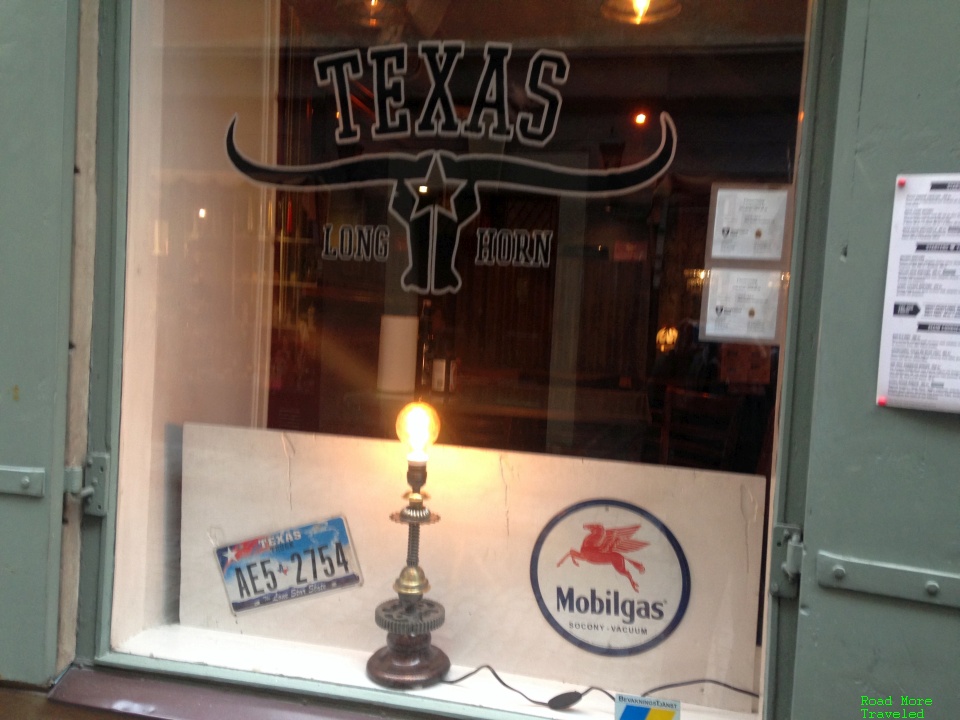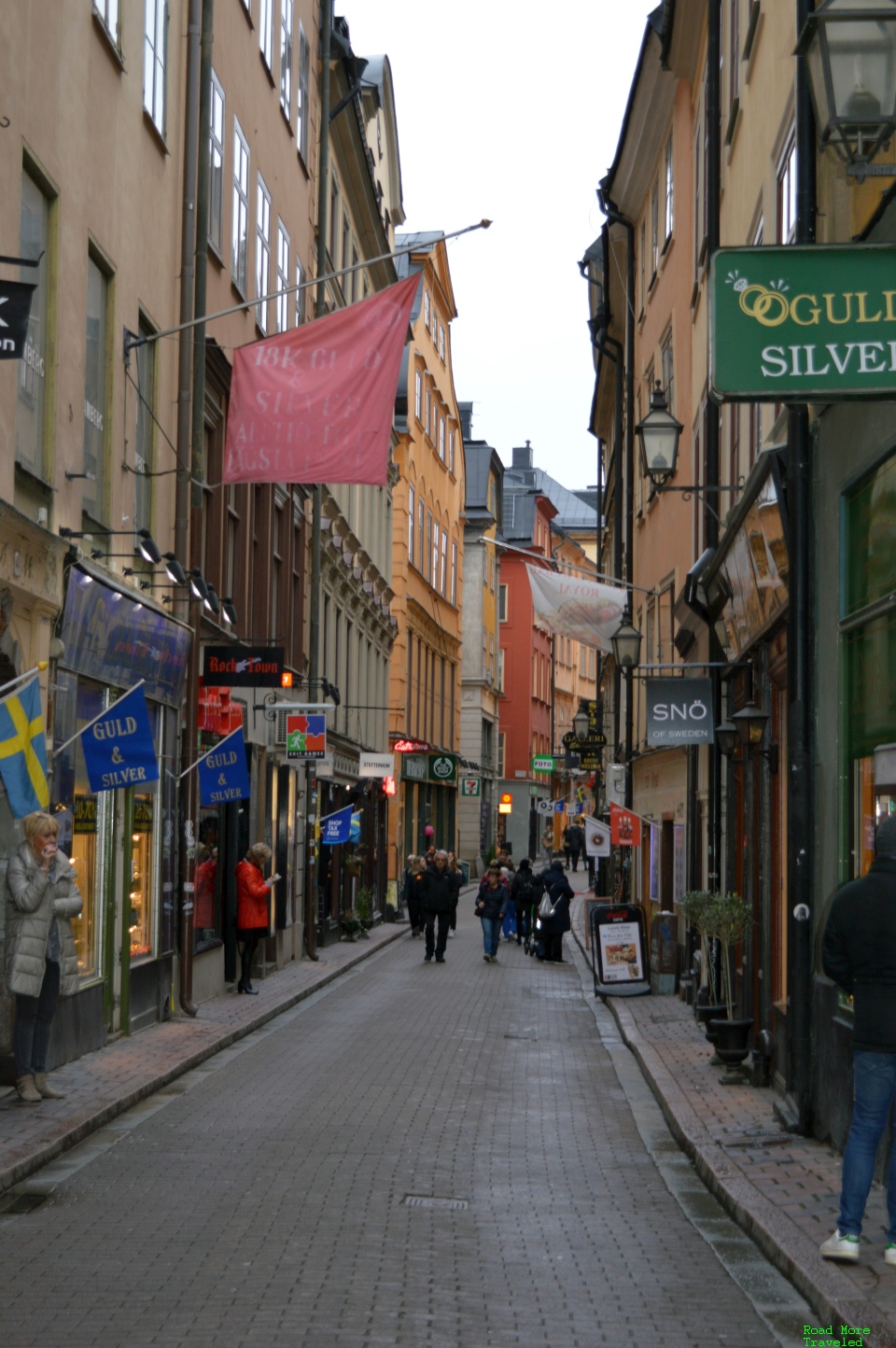With a late afternoon departure from Stockholm, I had the morning free to explore the city. Since my hotel was only a few minutes’ walk from Stockholm’s old town, I decided to spend my time there. Stockholm’s “Gamla Stan” provided a colorful and tasty look into the city’s history.
Note: this post is part of a longer series about my trip to Brussels and Stockholm last November. Click here for the introductory post and trip report index.
Stockholm Gamla Stan – Location
The Gamla Stan lies halfway between the city center to the north and the “Slussen” neighborhood to the south.
It’s super easy to reach from either the city center or Slussen, just one stop on the Metro. Or on foot, from the city center, it’s about a 10-15 minute walk across the river. From Slussen, it’s only 5-10 minutes. I stayed at the Hilton Stockholm Slussen; from there, a very easy walk over the bridge brings you to the edge of Gamla Stan.
And of course, you can enjoy a beautiful view of the neighborhood along the way.
I began this walking tour around 9:30, and wanted to head to the airport around noon. After allotting about half an hour to shop for trinkets, and a little time to eat, that gave me about an hour and a half to look around.
The Quiet Side Streets
I started off by exploring some of the quiet side streets of the Gamla Stan. In mid-November, that’s pretty much everything aside from the , the main street leading to the central square. More on that later. This quiet side of the Gamla Stan showcases the oranges, browns, and yellows of the historic quarter. On an otherwise grey day, the architecture adds a welcome splash of color.
Anyway, you might have noticed two church spires dominating the Gamla Stan skyline. The first, on the south end of the Gamla Stan, is “The German Church”, or Tyska Kyrkan. The bones of the building date to the 14th century, as a guildhall for the city’s German merchants. A rebuilding project, though, gradually transformed it into the Gothic Revival church you see today in the 1580s. The enormous 96-foot tall spire, though, came later, added in 1878.
A little to the south of the church is an interesting sculpture, “The Boy Climbs the Horse”, in front of the St. Nicholas School.
St. Nicholas School is the oldest parochial school in Sweden, reportedly dating to the late 13th century. The statue, by Swedish artist Ivar Viktor Jonsson, was added in 1956.
The Busier Stortorget
After enjoying a quiet walk on the side streets, I headed for the center of the Gamla Stan, the “Stortorget“. This market square dates way back; many historical accounts refer to it as a meeting place in Medieval Stockholm. In fact, carbon dating suggests the “Big Square” dates to the 11th century. Today, though, a relatively “modern” building fronts the square – the Stockholm Stock Exchange, completed in 1788. It hasn’t actually been used as a stock exchange since 1998. It instead houses an institution of worldwide significance – the Swedish Academy, which awards the Nobel Prize in Literature. The building also houses the Nobel Library and Nobel Prize Museum.
Also, even though there were a few more people out and about, I’d hardly call it crowded. Such is the benefit of visiting popular spots in the off-season.
The Stortorget is also famous for its Christmas markets. Unfortunately, it looks like I showed up a little too early to see them. While it looks like they’ve picked out the Christmas tree, the decorations hadn’t made it up when I visited. Next to the tree is the famous water well, the “Stortorgsbrunnen”, built in 1778. It dried up in 1857, but remains a ceremonial piece today. Recently, in fact, the city connected the well to the city water supply.
I also missed out on the Stortorget’s most famous buildings, “Numbers 18-20”. If you’ve seen photos of the Stortorget, most likely it’s these buildings you’ve seen. The orange and red buildings, respectively, date to the 17th century, when Charles X Gustavus’ secretary merged them together. The 82 white stones on Number 20 (the red building) supposedly symbolize the number of heads decapitated by the Danish king in 1520. Nice guy. Anyway, on the day of my visit, a tarp covered up both buildings due to an ongoing renovation.
In case you’re curious what Number 20 looks like, here’s a replica I bought at a craft shop nearby.
There’s also a random but cool statue of a lion’s head on one side of the square.
Just behind the Stortorget is the other church dominating the Gamla Stan skyline, “Storkyrkan”, or Church of St. Nicholas. The Swedish Brick Gothic-style cathedral also doubles as Stockholm’s oldest building, dating to at least 1306. Some legends even hold that Stockholm’s founder, Birger Jarl, built it himself some 30 years prior. Given its proximity to the Swedish royal palace, it often sees use in royal functions.
I wrapped up my walking tour with a walk past the Swedish Royal Palace. The current palace dates to the early 17th century, when it replaced the old palace, Tre Kronor, destroyed earlier by a fire. This particular section is the Treasury and Armoury Museums; I really wished I had more time to pay these a visit. Both look pretty spectacular.
Some Traditional Swedish Fare
By now, it was already approaching 11, so I went in search of food before heading back to the hotel. Walking around the Stortorget, I randomly found one of those “dungeon” restaurants you see in many old European cities. Unfortunately, I don’t remember the name. But I had a pretty good meal of Swedish meatballs (naturally) and mulled wine. If you’ve never had mulled wine, it’s a very sweet red wine served hot. Basically like a spiked cider.
This meal set me back about SEK 200 (about $22), and I undoubtedly paid the Stortorget tourist tax. But at least I got some genuine Swedish meatballs, and it allowed me to get rid of the rest of my cash…
On the way back to the hotel, I stopped for a couple more pictures. The first was a most interesting find – the “Texas Longhorn Steakhouse”. Complete with a Texas license plate and Pegasus sticker, the old Mobil Oil mascot and unofficial symbol of Dallas.
I also snapped a street scene along one of the Gamla Stan’s main alleyways, . This street doubles as the Gamla Stan’s main shopping area. I’d imagine this street is a zoo during the summer. In November, though, it’s not so bad. And as I mentioned earlier, moving just one street in any direction meant I had the area pretty much all to myself.
Final Thoughts
If you only have a short time here, Stockholm’s Gamla Stan is tailor made for a quick walking tour. It’s compact, allowing you to walk most of it in just an hour or two. Next time, though, I definitely want a full day to check out the museums, especially the Royal Palace.

